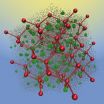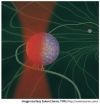(Press-News.org) Laparoscopic adjustable gastric banding – lap banding – is a safe and effective long-term strategy for managing obesity, according to the findings of a landmark 15-year follow-up study of patients treated in Australia.
The follow-up study, the longest and most comprehensive yet reported, was published in the Annals of Surgery, and found a significant number of lap band patients maintained an average weight loss of 26 kilograms for more than a decade after their procedure.
Professor Paul O'Brien and colleagues from the Centre for Obesity Research and Education (CORE) at Monash University in Melbourne analysed the results in 3,227 patients who had gastric banding between 1994, when the procedure was first introduced, and 2011. The patients in the study were averaged at 47 years of age and 78 per cent were women.
Of those patients, 714 had surgery at least 10 years ago and, on average, had maintained a weight loss of 26 kilograms, or almost half of their excess weight.
The weight loss results were similar for the 54 patients in the study who had undergone treatment at least 15 years ago.
"These results show that when you have a significant problem with obesity, a long-term solution is available," Professor O'Brien said.
"This surgery is safe and effective, and it has lasting benefits. Substantial weight loss can change the lives of people who are obese – they can be healthier and live longer."
Professor O'Brien said there were also important ramifications for the control of type 2 diabetes, which was strongly associated with being overweight.
"In obese patients with type 2 diabetes, weight loss after gastric banding can lead to effective control of blood sugar levels without the need for medication in about three-quarters of cases," Professor O'Brien said.
The patients included in the study had followed the rules of their treating team regarding eating, exercise and activity and committed to returning permanently to the aftercare program.
All the surgery was performed by Professor O'Brien, an international pioneer of the technique, and Associate Professor Wendy Brown, President of the Obesity Surgery Society of Australia and New Zealand (OSSANZ).
There were no deaths associated with the surgery or with any later operations that were needed in about half of the patients. About one in 20 patients had the band removed during the study period.
"In treating a chronic disease such as obesity over a lifetime, it is likely that something will need to be corrected at some time in some patients," Professor O'Brien said.
"The study shows a marked reduction of revisional procedures with the introduction of the new version of the Lap-Band 6 years ago. Importantly, those who had revisional surgery lost as much weight in the long term as those who did not need it."
The report also included a comparison of gastric banding – which can be done as a day-surgery procedure – and more invasive types of weight-loss surgery such as gastric bypass that are high risk and require longer hospital stay. The weight loss with gastric banding, and the need for future revisional surgery, was similar to that with gastric bypass.
"Access to weight-loss surgery in Australia remains severely limited for many obese patients as relatively few cases are treated within the public health system. We are working hard to improve access," Professor O'Brien said.
"We have ample evidence that weight-loss surgery is effective, and it is unfair that half of eligible patients cannot be treated, particularly as it has been shown that gastric banding is a highly cost-effective health care measure. The stigma of obesity, and the assumption that it is the person's fault, entrenches discrimination against people who could benefit."
### END
Gastric banding an effective long-term solution to obesity
Landmark study finds
2013-01-17
ELSE PRESS RELEASES FROM THIS DATE:
'Jet-lagged' fruit flies provide clues for body clock synchronisation
2013-01-17
New research led by a team at Queen Mary, University of London, has found evidence of how daily changes in temperature affect the fruit fly's internal clock.
"A wide range of organisms, including insects and humans, have evolved an internal clock to regulate daily patterns of behaviour, such as sleep, appetite, and attention," explains Professor Ralf Stanewsky, senior study author from Queen Mary's School of Biological and Chemical Sciences.
"Research on animal and human clocks shows that they are fine tuned by natural and man-made time cues, for example the daily ...
Genetic admixture in southern Africa
2013-01-17
This press release is available in German.
An international team of researchers from the MPI for Evolutionary Anthropology in Leipzig and the CNRS in Lyon have investigated the maternally inherited mitochondrial DNA of 500 individuals from southern Africa speaking different Khoisan and Bantu languages. Their results demonstrate that Khoisan foragers were genetically more diverse than previously known. Divergent mtDNA lineages from indigenous Khoisan groups were incorporated into the genepool of the immigrating Bantu-speaking agriculturalists through admixture, and have ...
Study of cancer cell metabolism yields new insights on leukemia
2013-01-17
University of Rochester Medical Center scientists have proposed a new reason why acute myeloid leukemia, one of the most aggressive cancers, is so difficult to cure: a subset of cells that drive the disease appear to have a much slower metabolism than most other tumors cells.
The slower metabolism protects leukemia cells in many important ways and allows them to survive better – but the team also found an experimental drug tailored to this unique metabolic status and has begun testing its ability to attack the disease, URMC researchers report in the Jan. 17, 2013, online ...
Bacteria's hidden skill could pave way for stem cell treatments
2013-01-17
A discovery about the way in which bugs spread throughout the body could help to develop stem cell treatments.
Researchers at the University of Edinburgh have found that bacteria are able to change the make-up of supporting cells within the nerve system, called Schwann cells, so that they take on the properties of stem cells.
Because stem cells can develop into any of the different cell types in the body – including liver and brain cells – mimicking this process could aid research into a range of degenerative conditions.
Scientists made the discovery studying ...
RUB researchers find over active enzyme in failing hearts
2013-01-17
A certain enzyme, the CaM kinase II, keeps the cardiac muscle flexible. By transferring phosphate groups to the giant protein titin, it relaxes the muscle cells. This is reported by researchers led by Prof. Dr. Wolfgang Linke of the Institute of Physiology at the Ruhr Universität in the journal Circulation Research. In failing hearts, which don't pump enough blood around the body, the scientists found an overly active CaM kinase II. "The phosphorylation of titin could be a new starting point for the treatment of heart failure" Prof. Linke speculates.
Titin phosphorylation ...
Soft Lego built in the computer
2013-01-17
In developing these novel self-assembling materials, postdoc Barbara Capone has focused on the design of organic and inorganic building blocks, which are robust and can be produced at large scale. Capone has put forward, together with her colleagues at the Universities of Vienna and Mainz, a completely new pathway for the construction of building blocks at the nanoscale.
"Soft Lego" orders in crystal structures
The team of researchers has shown that so-called block copolymer stars – that means polymers that consist of two different blocks and they are chemically ...
Vaginal delivery is the safest option for women with pelvic girdle pain
2013-01-17
Caesarean section increases the risk of persistent pelvic girdle pain after delivery compared with vaginal delivery, according to a new study from the Norwegian Institute of Public Health.
Caesarean section rates are increasing worldwide, and this trend has partly been explained by women's requests for planned caesarean section without a medical reason. Pregnancy-related pelvic girdle pain has been associated with increased preference for caesarean section and with increased planned caesarean section rates.
"Some women with severe pelvic girdle pain might fear that ...
A nano-gear in a nano-motor inside you
2013-01-17
To live is to move. You strike to swat that irritable mosquito, which skilfully evades the hand of death. How did that happen? Who moved your hand, and what saved the mosquito? Enter the Molecular Motors, nanoscale protein-machines in the muscles of your hand and wings of the mosquito. You need these motors to swat mosquitoes, blink your eyes, walk, eat, drink... just name it. Millions of motors tug as a team within your muscles, and you swat the mosquito. This is teamwork at its exquisite best.
Paradoxically, a weak and inefficient motor (called dynein) is the one that ...
A hidden treasure in the Large Magellanic Cloud
2013-01-17
Nearly 200 000 light-years from Earth, the Large Magellanic Cloud, a satellite galaxy of the Milky Way, floats in space, in a long and slow dance around our galaxy. Vast clouds of gas within it slowly collapse to form new stars. In turn, these light up the gas clouds in a riot of colours, visible in this image from the NASA/ESA Hubble Space Telescope.
The Large Magellanic Cloud (LMC) is ablaze with star-forming regions. From the Tarantula Nebula, the brightest stellar nursery in our cosmic neighbourhood, to LHA 120-N 11, part of which is featured in this Hubble image, ...
Potential new treatment for gastrointestinal cancers discovered
2013-01-17
Researchers have identified a complex of proteins that promotes the growth of some types of colon and gastric cancers, and shown that medications that block the function of this complex have the potential to be developed into a new treatment for these diseases.
The complex of proteins, known as mTorc1 (mammalian target of rapamycin complex 1), has previously been implicated in the development of some other cancers but this is the first time it has been shown to promote the growth of colon and gastric cancers that are associated with inflammation.
Dr Stefan Thiem and ...
LAST 30 PRESS RELEASES:
How talking slows eye movements behind the wheel
The Ceramic Society of Japan’s Oxoate Ceramics Research Association launches new international book project
Heart-brain connection: international study reveals the role of the vagus nerve in keeping the heart young
Researchers identify Rb1 as a predictive biomarker for a new therapeutic strategy in some breast cancers
Survey reveals ethical gaps slowing AI adoption in pediatric surgery
Stimulant ADHD medications work differently than thought
AI overestimates how smart people are, according to HSE economists
HSE researchers create genome-wide map of quadruplexes
Scientists boost cell "powerhouses" to burn more calories
Automatic label checking: The missing step in making reliable medical AI
Low daily alcohol intake linked to 50% heightened mouth cancer risk in India
American Meteorological Society announces Rick Spinrad as 2026 President-Elect
Biomass-based carbon capture spotlighted in newly released global climate webinar recording
Illuminating invisible nano pollutants: advanced bioimaging tracks the full journey of emerging nanoscale contaminants in living systems
How does age affect recovery from spinal cord injury?
Novel AI tool offers prognosis for patients with head and neck cancer
Fathers’ microplastic exposure tied to their children’s metabolic problems
Research validates laboratory model for studying high-grade serous ovarian cancer
SIR 2026 delivers transformative breakthroughs in minimally invasive medicine to improve patient care
Stem Cell Reports most downloaded papers of 2025 highlight the breadth and impact of stem cell research
Oxford-led study estimates NHS spends around 3% of its primary and secondary care budget on the health impacts of heat and cold in England
A researcher’s long quest leads to a smart composite breakthrough
Urban wild bees act as “microbial sensors” of city health.
New study finds where you live affects recovery after a hip fracture
Forecasting the impact of fully automated vehicle adoption on US road traffic injuries
Alcohol-related hospitalizations from 2016 to 2022
Semaglutide and hospitalizations in patients with obesity and established cardiovascular disease
Researchers ‘listen in’ to embryo-mother interactions during implantation using a culture system replicating the womb lining
How changing your diet could help save the world
How to make AI truly scalable and reliable for real-time traffic assignment?
[Press-News.org] Gastric banding an effective long-term solution to obesityLandmark study finds




